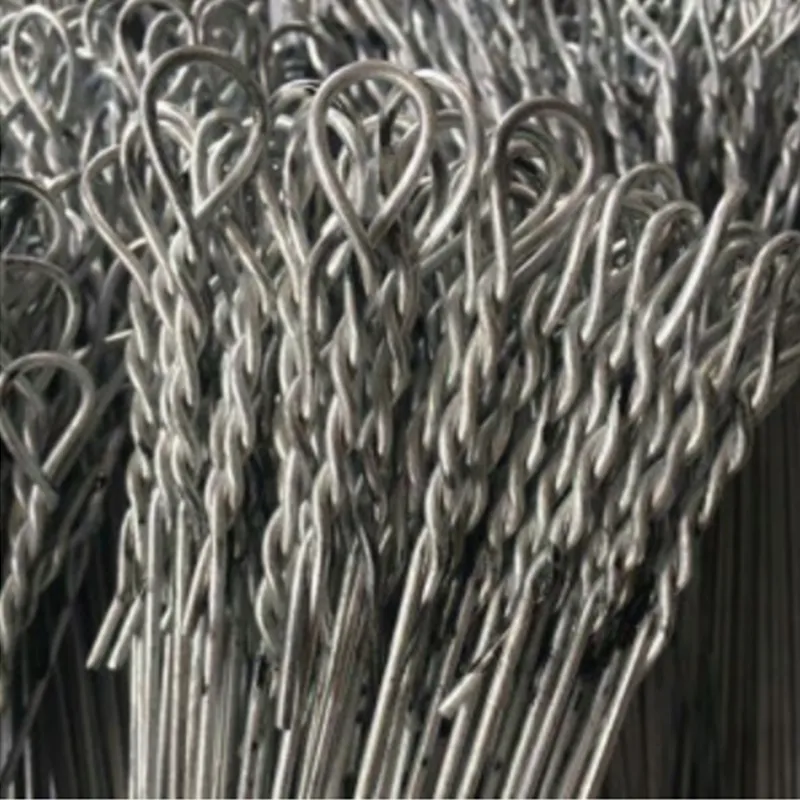-
 Phone:
Phone: -
 Email:
Email:

Understanding Baling Wire Gauge and Its Importance in Agricultural Applications
Understanding Baling Wire Gauge A Comprehensive Guide
Baling wire is an essential component in industries that require the bundling and transporting of materials. Whether in recycling, agriculture, or manufacturing, baling wire provides the necessary strength to hold together various items for efficient handling and shipping. One of the most critical aspects of selecting the appropriate baling wire is understanding its gauge.
What is Wire Gauge?
Wire gauge refers to the standard measurement of the diameter of a wire. In the context of baling wire, gauge determines the wire's thickness and subsequently its strength, flexibility, and suitability for specific applications. The lower the gauge number, the thicker the wire. Conversely, a higher gauge number indicates a thinner wire. For instance, 10-gauge wire is much thicker and stronger than 18-gauge wire.
Importance of Baling Wire Gauge
Choosing the right gauge is crucial for several reasons
1. Strength and Durability Thicker wires (lower gauge numbers) tend to have greater tensile strength, making them suitable for heavy-duty applications such as bundling bales of hay or cardboard for recycling. Using a wire that is too thin can lead to failures during handling or transportation, resulting in financial losses and safety hazards.
2. Weight Considerations In some applications, the weight of the wire itself can impact shipping costs. Thinner wires can reduce overall weight, which may be beneficial for lighter loads, while thicker wires are required for more substantial items.
3. Application Specificity Different industries have varying requirements. For example, in agriculture, heavier gauge wire might be necessary for securing large bales of hay, while a lighter gauge could suffice in manufacturing for bundling lighter components. Understanding the demands of the specific application is crucial when selecting the appropriate gauge.
4. Flexibility and Ease of Use Thinner wires are generally easier to manipulate and tie, which can be beneficial in situations where quick adjustments are necessary. However, they might not provide the same level of security as thicker wires, especially for heavier loads.
Common Gauges of Baling Wire
Baling wires are available in various gauges, with 9, 10, and 12-gauge wires being widely used for most baling applications.
baling wire gauge

- 9-Gauge Wire This is one of the thickest options available and is known for its exceptional strength. It is typically used in heavy-duty applications, such as baling metal scrap or heavy boxes.
- 10-Gauge Wire Slightly thinner, this gauge is versatile and commonly used in both agricultural and industrial settings. It strikes a balance between strength and weight, making it suitable for various materials.
- 12-Gauge Wire This thinner option is ideal for lighter bales, such as those made from paper or plastic. It is easier to handle and can be particularly useful in operations that require quick bundling.
Choosing the Right Baling Wire
When selecting baling wire, consider the following steps
1. Assess the Material Determine what materials you will be bundling and their weight. This assessment will help you identify the appropriate gauge.
2. Operational Needs Evaluate your operational efficiency requirements. If your operations necessitate frequent adjustments or quick bundling, a thinner gauge might be advantageous.
3. Cost vs. Quality While it may be tempting to opt for a lower-cost option, quality should not be compromised. Investing in high-quality wire will save money in the long run by reducing the need for replacements.
4. Consult Experts If in doubt, consult manufacturers or suppliers who can provide guidance based on your specific needs and the materials involved.
Conclusion
Understanding baling wire gauge is essential for ensuring that your bundling operations are efficient and secure. By choosing the right gauge, you can enhance productivity, minimize costs, and ensure safe handling of materials. With the right information and consideration, businesses can optimize their processes and ultimately achieve better outcomes. As industries continue to evolve, the importance of quality baling wire will remain a constant in the quest for operational efficiency.
-
Wire Mesh for Every Need: A Practical SolutionNewsJul.25,2025
-
Steel Fences: Durable, Secure, and Stylish OptionsNewsJul.25,2025
-
Roll Top Fencing: A Smart Solution for Safety and SecurityNewsJul.25,2025
-
Cattle Farm Fencing Solutions for Maximum SecurityNewsJul.25,2025
-
Affordable Iron Binding Wire SolutionsNewsJul.25,2025
-
Affordable Galvanized Wire SolutionsNewsJul.25,2025
-
Wire Hanger Recycling IdeasNewsJul.25,2025








